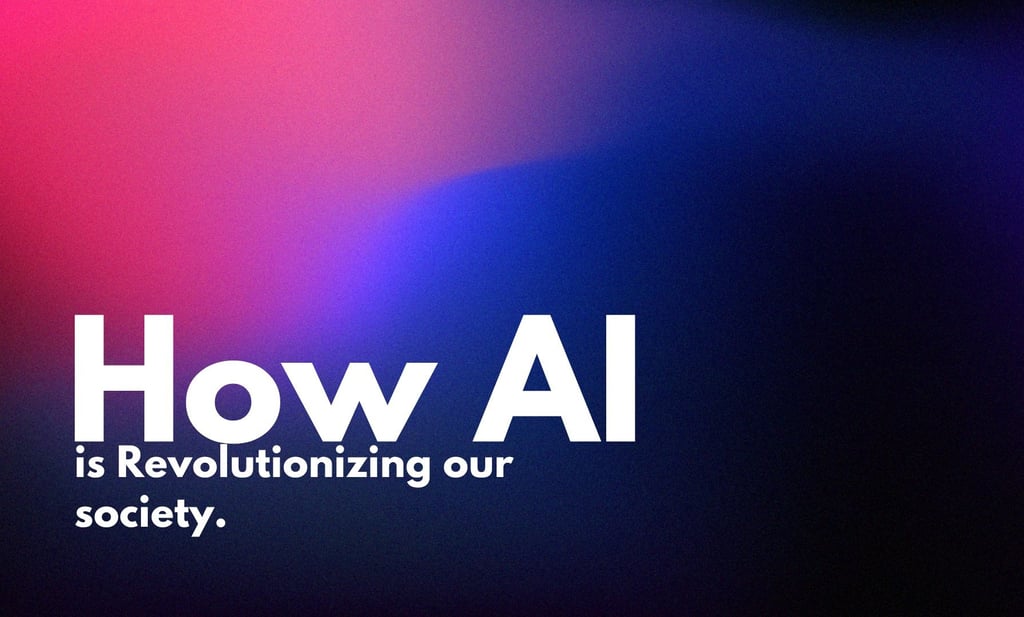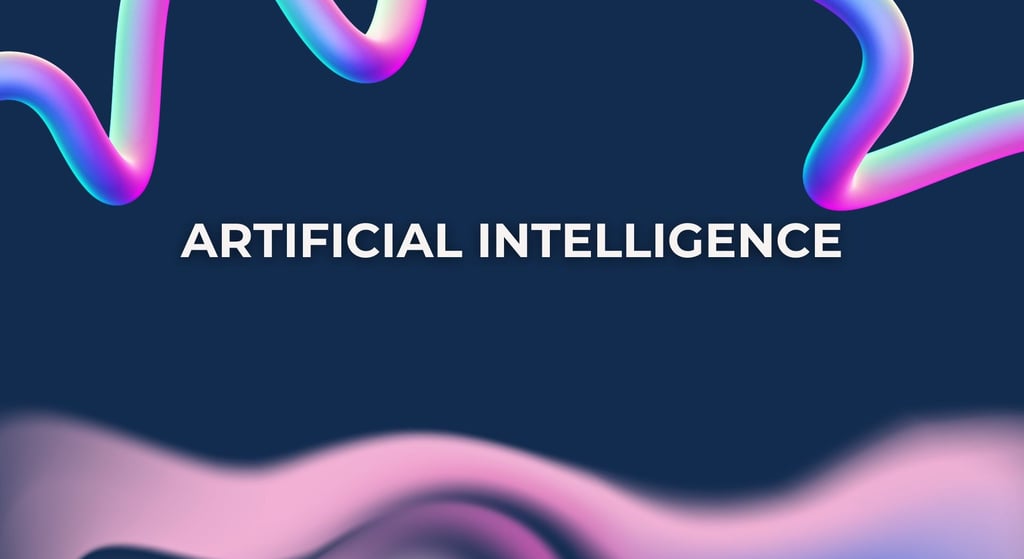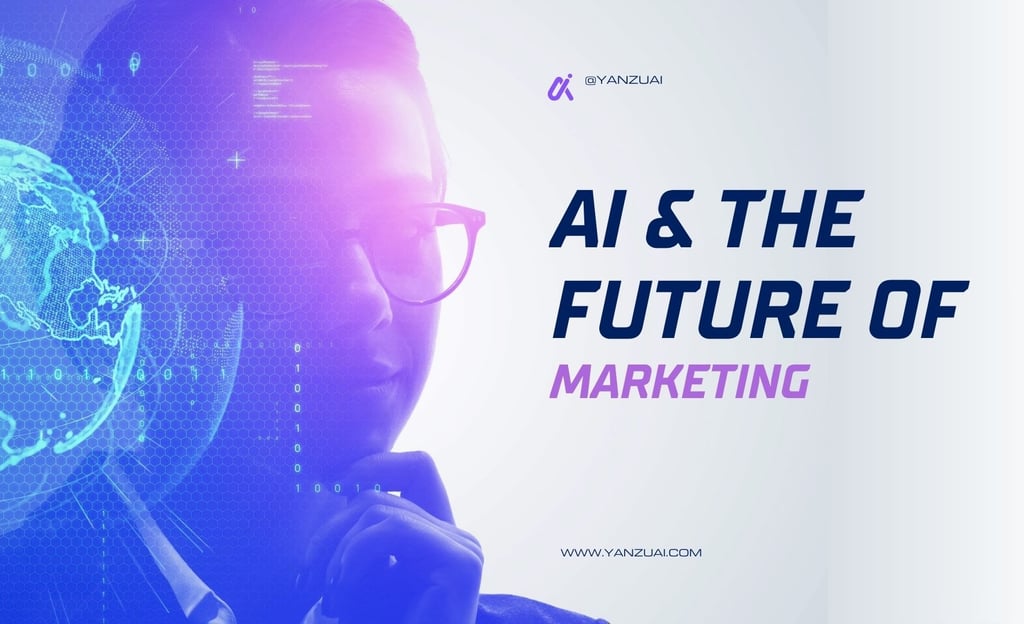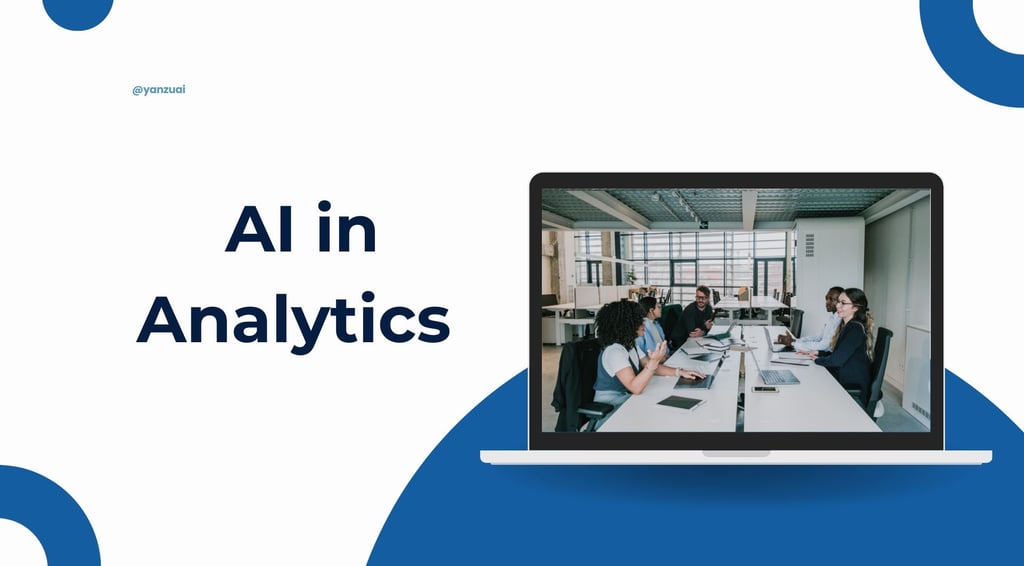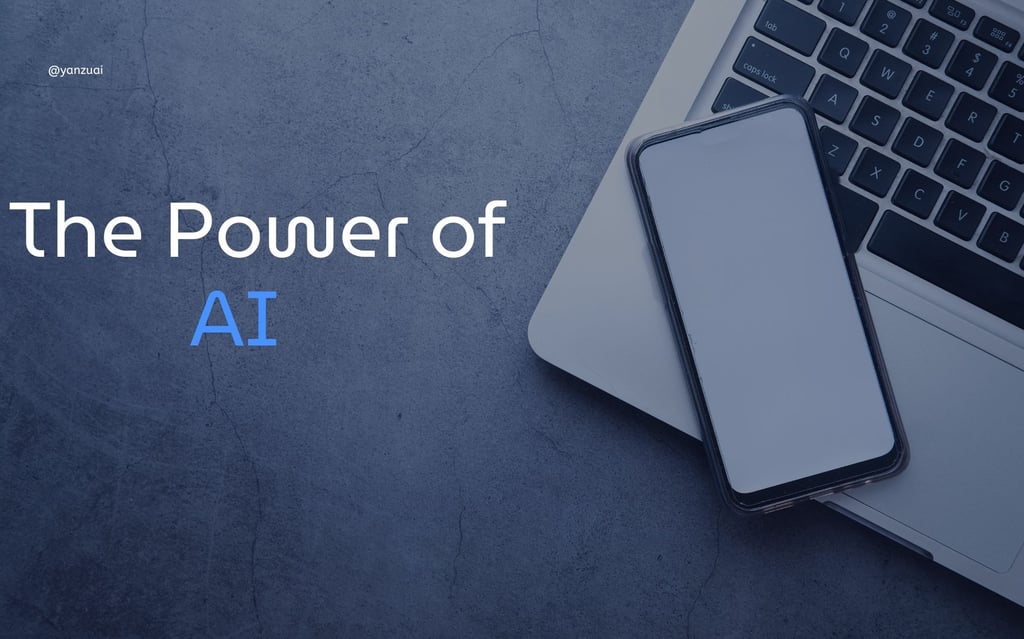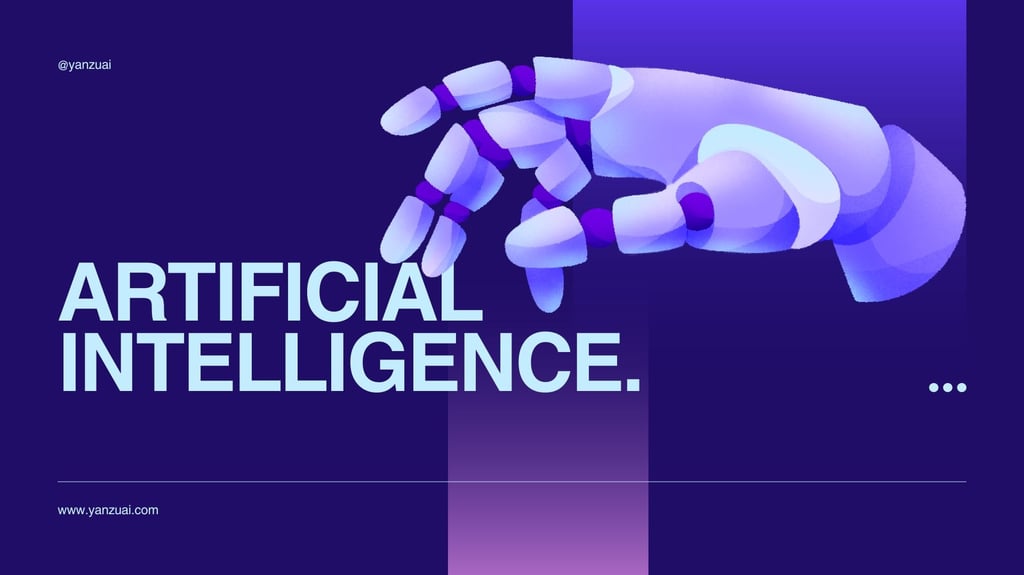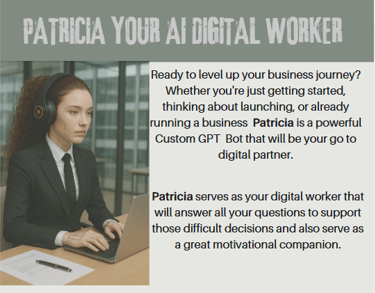Top AI Trends to Watch in 2025 (and How to Capitalize on Them Early)
8/12/202514 min read
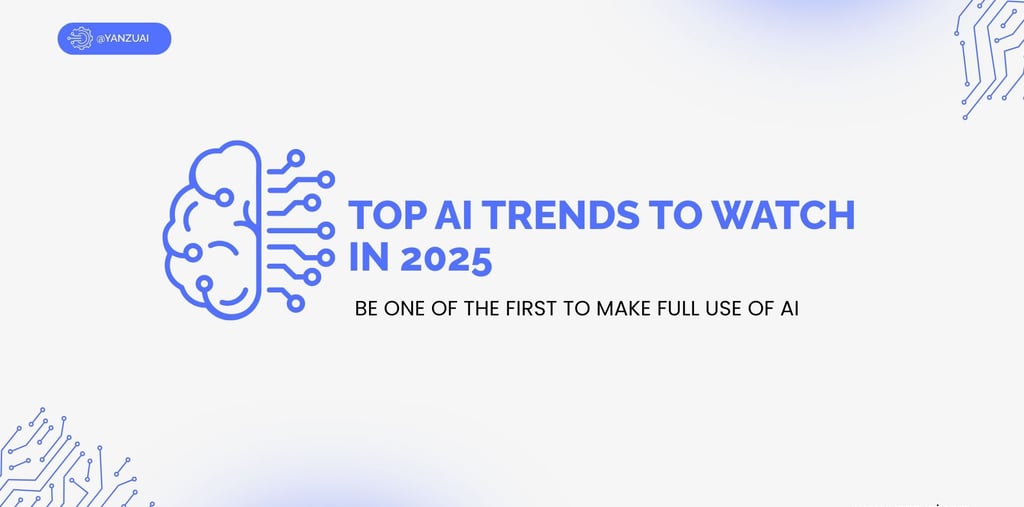

Hook + TL;DR
As we approach 2025, the realm of artificial intelligence is evolving at an unprecedented speed. In this blog post, we will explore the key AI trends that are poised to shape industries and redefine operational capabilities. The urgency for founders and business owners to grasp these trends cannot be overstated; early adaptation is essential for securing a competitive edge. Below are five critical trends that demand attention:
Generative AI Advancement: The rise of generative AI models will revolutionize content creation, product design, and personalization. Founders should explore integration opportunities for tools that enhance creativity and automate workflows.
AI in Cybersecurity: With increasing digital threats, AI-powered cybersecurity solutions will become crucial. Businesses must invest in integrating these systems to protect sensitive data and safeguard their operations.
AI-Enhanced Customer Experience: Leveraging AI-driven insights to improve customer interactions will be paramount. Companies should prioritize developing personalized experiences, utilizing chatbots and recommendation systems to enhance engagement.
AI and Sustainability: Increasingly, AI will play a role in driving sustainability initiatives. Business leaders should consider investing in AI technologies that minimize waste and optimize resource use, aligning with consumer expectations for eco-friendly practices.
Ethical AI Implementation: As organizations adopt AI, ethical considerations will take center stage. Early adopters should establish guidelines to ensure responsible AI use, fostering trust and transparency while mitigating potential risks.
Understanding and acting on these trends positions founders and business owners to harness the full potential of artificial intelligence, ensuring their businesses not only survive but thrive in the rapidly evolving landscape of 2025. It is imperative to remain proactive in adapting to these shifts to secure a prosperous future.
Why Now?
The year 2025 is poised to be a pivotal moment for applied artificial intelligence. With the rapid progress being made in the realm of machine learning and AI technologies, businesses across various sectors are starting to realize the potential of these advancements. The integration of AI tools into everyday operations is no longer a distant vision; it is becoming an essential component for companies aiming to stay competitive. This trend reflects a growing recognition that AI can enhance productivity, drive innovation, and improve decision-making processes.
Advancements in machine learning algorithms are a significant factor contributing to the relevance of 2025. Continuous improvements in data processing capabilities and algorithm efficiency allow businesses to extract more value from their data. These innovations empower organizations to adopt predictive analytics and automate complex processes, ultimately transforming operational workflows. As a result, companies that embrace these technologies will be well-positioned to benefit from enhanced insights and more agile decision-making.
Moreover, the growing accessibility of AI tools presents a unique opportunity for small businesses and creators. The democratization of artificial intelligence means that even organizations with limited resources can leverage sophisticated AI solutions. Cloud-based platforms and user-friendly software have made it feasible for anyone to implement AI-driven strategies. This shift not only empowers smaller enterprises to compete alongside established corporations but also encourages creativity and innovation across various domains. As such, understanding the trends emerging in this critical juncture is essential for all stakeholders aiming to harness the power of artificial intelligence effectively.
AI Trend 1: Advanced Natural Language Processing
As we approach 2025, advancements in Natural Language Processing (NLP) stand out as pivotal trends in artificial intelligence that will reshape communication between humans and machines. NLP technology has significantly progressed, facilitating more intuitive interactions through enhanced understanding, generation, and processing of human language. This evolution is not only improving voice recognition systems but also enabling machines to comprehend context, sentiment, and complex queries, thereby creating a more seamless dialogue experience.
In customer support, advanced NLP is transforming service delivery frameworks. Automated chatbots and virtual assistants are becoming increasingly adept at managing inquiries and providing support tailored to individual user needs. By leveraging sophisticated NLP, these AI systems can accurately interpret customer questions, resolve issues efficiently, and elevate the overall user experience. Businesses that adopt these technologies can benefit from reduced operational costs while enhancing customer satisfaction and loyalty through swift, personalized responses.
Moreover, NLP is refining content creation strategies across various industries. By utilizing advanced AI-driven tools, marketers and content creators can generate high-quality written materials with improved efficiency. This includes producing blog posts, articles, and social media content that resonates with target audiences. Such capabilities not only save time but also ensure that the material remains relevant and engaging, meeting the ever-changing demands of consumers. Businesses that capitalize on these advancements are likely to gain a competitive edge in content engagement.
In summary, the advancements in Natural Language Processing present significant opportunities for businesses. By adopting these innovative solutions, organizations can improve customer interactions, enrich content strategies, and ultimately foster stronger connections with their audiences. As NLP technology continues to evolve, remaining agile and open to adopting these changes will prove beneficial for companies striving to succeed in the coming years.
AI Trend 2: Hyper-Personalization
In an era where consumer expectations are continuously evolving, hyper-personalization has emerged as a pivotal trend, particularly in the realm of artificial intelligence. This practice hinges on the ability of businesses to utilize data-driven insights to deliver tailored experiences that resonate with individual customers. By harnessing advanced algorithms and machine learning techniques, businesses, especially small enterprises, can analyze vast amounts of customer data to understand preferences and behaviors. This understanding enables them to offer highly customized recommendations and services.
Small businesses have a unique opportunity to leverage hyper-personalization to compete with larger corporations. For instance, utilizing customer relationship management (CRM) tools integrated with AI capabilities can provide real-time analytics and insights, allowing businesses to fine-tune their marketing strategies. By analyzing previous purchase behavior, browsing patterns, and even social interactions, small businesses can create targeted campaigns that significantly enhance user engagement.
Moreover, the emergence of AI chatbots further amplifies hyper-personalization efforts. These tools not only provide immediate assistance but can also learn from each interaction, progressively refining their responses and recommendations. Consequently, customers receive a more personalized experience that feels tailored to their specific needs. As consumer demands for more relevant and personalized interactions grow, businesses that adopt hyper-personalization strategies can enhance customer loyalty and retention.
Incorporating personalized product offerings into a business model can be particularly fruitful. By analyzing customer data, companies can identify trends and preferences, ensuring that their product selections align with their audience's interests. The proactive use of hyper-personalization is not merely a transient trend but rather a vital strategy for businesses looking to thrive in an increasingly competitive landscape.
AI-Powered Marketing Automation
In recent years, marketing automation has undergone a significant transformation, primarily driven by advancements in artificial intelligence (AI). As businesses increasingly seek innovative ways to reach customers, AI-powered marketing automation tools have become indispensable for organizations aiming to enhance their marketing effectiveness. These tools leverage machine learning algorithms and data analytics to streamline campaigns, enhance targeting precision, and ultimately raise customer acquisition rates.
One of the key advantages of AI-powered marketing automation is its ability to analyze vast datasets quickly and efficiently. By assessing consumer behavior and preferences, businesses can tailor their marketing strategies to meet the specific needs of their target audience. For small business owners, this level of personalization can serve as a game-changer, allowing them to compete more effectively with larger brand competitors. Leveraging AI tools, small businesses can create highly targeted email campaigns or personalized landing pages that resonate with individual customer segments.
Moreover, AI marketing automation tools enable businesses to optimize their campaigns in real-time. This capability allows small business owners to assess which strategies are performing well and which should be modified, all without requiring extensive manual oversight. With features such as predictive analytics, businesses can anticipate customer behavior and adjust their marketing efforts accordingly to maximize engagement. This adaptiveness is particularly vital in today’s dynamic market environments, where consumer preferences can shift rapidly.
By capitalizing on AI-powered marketing automation early, small business owners can streamline their campaigns efficiently while achieving a better return on investment. Embracing these technologies not only enhances customer targeting but also promotes better resource allocation, enabling businesses to focus on the areas that yield the highest impact. The evolution of marketing automation, enhanced by AI, represents a considerable opportunity for small businesses to improve their market presence and boost customer acquisition strategies.
AI Trend 4: Visual AI and Image Recognition
As artificial intelligence continues to advance, the focus on visual AI and image recognition technologies is increasingly prominent. These technologies leverage complex algorithms and deep learning models to analyze and interpret visual data, enabling a broad range of applications across various industries. The ability of visual AI to identify objects, people, and scenes is transforming how businesses interact with their customers and streamline operations.
For creators and small businesses, integrating visual AI into digital marketing strategies can lead to significant advantages. By harnessing image recognition capabilities, businesses can analyze user-generated content, allowing them to understand consumer preferences and trends better. This insight enables more personalized marketing campaigns that resonate with target audiences. Additionally, visual AI can enhance content curation by automatically tagging and categorizing images, making it easier for marketers to manage vast libraries of visual assets.
Moreover, visual AI plays a substantial role in product development. For example, companies can utilize image recognition technologies to evaluate product performance based on visual feedback from users. By examining how consumers interact with products through images shared on social media, businesses can identify strengths and weaknesses and iterate on their designs accordingly. This data-driven approach not only fosters innovation but also bolsters customer satisfaction, as products become more aligned with consumer expectations.
Finally, user experience can be significantly improved through the implementation of visual AI. Intelligent image recognition systems can enable advanced features such as visual search, where users can find products by uploading images instead of using text queries. This not only enhances user engagement but also simplifies the buying process, leading to higher conversion rates. As visual AI continues to evolve and mature, small businesses that strategically adopt these technologies will likely find themselves at a competitive advantage, engaging audiences more effectively and innovating at pace.
AI Ethics and Trustworthiness
The growing integration of artificial intelligence (AI) in various sectors has brought forth not only innovative advancements but also significant ethical dilemmas. As organizations increasingly rely on AI technologies, the need for ethical considerations has become paramount. The focus on AI ethics and trustworthiness deals with how algorithms are developed, deployed, and how they affect users and society at large. With stricter regulations and heightened public scrutiny, companies must prioritize the ethical dimensions of AI to foster trust among consumers.
To build trustworthy AI systems, businesses should adopt a transparent approach in their AI processes. This includes clearly communicating how AI algorithms operate and the data sourced for their training. Establishing guidelines for ethical use of AI can help mitigate biases and ensure that the technology promotes fairness and accountability. Companies can invest in training and awareness programs that emphasize the significance of ethical considerations in AI development. Furthermore, collaborating with diverse teams during the AI design phase can help identify potential issues related to bias and discrimination.
In addition to integrating ethical practices into their projects, organizations must also communicate their commitment to AI ethics to their customers. Transparency is key in addressing societal concerns regarding AI, and businesses should actively engage with stakeholders to explain their ethical frameworks. By adopting practices such as regular auditing and oversight, organizations can demonstrate a strong commitment to ethical AI. Ultimately, strategically addressing AI ethics and trustworthiness will not only enhance a company's reputation but also promote customer loyalty in an increasingly AI-driven market.
AI Trend 6: Voice-Activated AI Solutions
The emergence of voice-activated AI solutions is rapidly transforming how businesses engage with their customers. As devices equipped with voice recognition capabilities, such as smart speakers and mobile assistants, become increasingly integrated into daily life, small businesses and marketers must consider how these technologies can enhance their customer interaction strategies. By 2025, voice-activated technology is predicted to become a mainstream interface for conducting transactions and providing customer support.
Voice-activated solutions allow users to interact with services hands-free, creating opportunities for accessibility and convenience. The implications for small businesses are significant; by adopting this technology, companies can streamline customer engagement and cater to the preferences of a growing demographic that favors voice commands over traditional text inputs. Furthermore, brands can optimize their marketing efforts by leveraging voice search optimization, ensuring that their products and services are easily discoverable through voice queries.
Implementing voice-activated solutions can dramatically enhance service delivery. For instance, businesses can develop voice-enabled applications that facilitate order placements, inquiries, or even personalized recommendations based on user behavior. This not only improves the customer experience but can also lead to increased loyalty and satisfaction. In turn, this can provide small businesses a competitive edge in crowded markets, as satisfied customers are more likely to share their positive experiences with others.
Moreover, the data collected from voice interactions can provide valuable insights into customer preferences and behaviors. By analyzing this data, small businesses can further refine their offerings and marketing strategies, ensuring they align tightly with consumer needs. As the landscape of customer engagement continues to evolve, staying ahead of the voice-activated AI trend will be paramount for businesses looking to thrive in the future marketplace.
AI in Remote Work Tools
The integration of artificial intelligence (AI) in remote work tools is set to transform the way businesses operate, particularly for small enterprises adapting to a rapidly evolving workplace. As remote work becomes increasingly prevalent, organizations are looking to optimize their operations and maintain effective collaboration among distributed teams. AI-driven applications are emerging as valuable assets that can enhance team productivity, streamline project management, and foster communication.
One of the significant advantages of utilizing AI in remote work applications is the capability for intelligent task management. AI algorithms can analyze workloads and automatically prioritize tasks based on deadlines, team member availability, and project requirements. This intelligent approach not only aids managers in allocating resources efficiently but also allows employees to focus on high-impact activities, thereby increasing overall productivity.
Additionally, AI-powered tools offer enhanced collaboration features that facilitate communication across teams. With features such as virtual assistants and smart scheduling, organizations can minimize time wasted on logistical questions and streamline processes. For instance, AI can automatically schedule meetings by analyzing team members’ calendars to find optimal times without the back-and-forth typically associated with organizing events. This functionality enhances collaboration and fosters a more cohesive remote working environment.
Moreover, AI can provide businesses with valuable insights into team dynamics and productivity patterns. By leveraging data collected through various applications, small businesses can uncover trends related to remote work performance. Understanding these analytics can lead to informed decision-making regarding training, project timelines, and team structure, thus enabling businesses to capitalize on their strengths and mitigate weaknesses.
In conclusion, the integration of AI in remote work tools presents vast opportunities for small businesses. By embracing these advancements, companies can enhance collaboration, boost productivity, and improve project management, positioning themselves for success in the new era of work.
AI Trend 8: Predictive Analytics for Decision Making
In recent years, predictive analytics has emerged as a pivotal component of data-driven decision making, particularly fueled by advancements in artificial intelligence. This technology allows businesses to analyze vast amounts of historical data to identify patterns and trends, ultimately leading to more informed and strategic decisions. For small business owners, leveraging predictive analytics can enhance operational efficiency, customer satisfaction, and overall profitability.
One of the most practical applications of predictive analytics lies in inventory management. For instance, retail businesses can utilize AI to forecast demand for products based on historical sales data, seasonal trends, and even customer behavior. By doing so, they can optimize inventory levels, reduce holding costs, and minimize stockouts or overstock situations, thus enhancing customer experience and increasing sales conversions.
Moreover, in the realm of marketing, predictive analytics enables businesses to tailor their campaigns effectively. By analyzing consumer behaviors, preferences, and demographics, small business owners can predict which marketing messages are likely to resonate most with target audiences. This targeted approach not only improves engagement rates but also ensures that marketing budgets are spent efficiently, maximizing return on investment.
Another significant area where predictive analytics shines is in customer relationship management (CRM). Small businesses can use AI-powered analytics to predict customer churn by identifying early warning signs based on past interactions and behaviors. By addressing these issues proactively, businesses can implement retention strategies and enhance customer loyalty, ultimately driving long-term success.
As predictive analytics continues to advance, small business owners who adopt these technologies will not only stay competitive but also become leaders in their respective markets. By embracing the insights provided by AI and predictive analytics, businesses can significantly improve their decision-making processes, ensuring they remain agile and responsive to the ever-changing business landscape.
AI Trend 9: AI-Driven Financial Management
The landscape of financial management is undergoing a significant transformation as artificial intelligence (AI) technologies become more accessible to small businesses. Advanced algorithms and machine learning models are designed to analyze financial data quickly and accurately, facilitating budget preparation, forecasting, and cash flow management. This shift enables small business owners to transition from manual financial tasks to more strategic decisions that promote growth and sustainability.
One of the primary advancements in AI-driven financial management is the development of automated budgeting tools. These tools leverage historical financial data and market trends to create more accurate budgets. Instead of relying on estimations, small businesses can use AI platforms that analyze past spending, income patterns, and anticipated expenses. This not only enhances accuracy but also saves invaluable time that owners would otherwise spend on traditional budgeting processes.
Cash flow management is another area where AI is making a considerable impact. AI-powered tools can monitor real-time transactions and provide insights into cash flow patterns. They can predict cash shortages or surpluses, allowing business owners to make informed decisions about investments or cutbacks. This forward-looking feature provides a strategic advantage, as it helps owners plan for contingencies and seize opportunities as they arise.
Moreover, AI technologies can assist in expense tracking and invoice management. Employing automated systems reduces human error and streamlines processes, which is crucial for small businesses operating with limited resources. By utilizing machine learning algorithms, these systems can recognize patterns in spending and suggest cost-effective alternatives. Overall, the integration of AI in financial management is reshaping the daily operations of small businesses, enabling owners to concentrate more on scaling their ventures rather than getting bogged down by logistics.
AI for Sustainable Business Practices
The growing emphasis on sustainability has prompted organizations worldwide to adopt environmentally friendly practices. Artificial Intelligence (AI) plays a pivotal role in facilitating sustainable business operations, particularly for small businesses aiming to reduce their ecological footprint. Through advanced data analytics and machine learning algorithms, AI can significantly optimize resource usage, leading to reduced waste and enhanced operational efficiency.
One of the key technologies driving this transformation is AI-powered inventory management systems. These systems analyze sales trends, seasonality, and customer demand to ensure that businesses maintain optimal stock levels. By avoiding overproduction and minimizing excess inventory, small businesses can reduce waste and mitigate their environmental impact. Additionally, AI tools can provide insights into supply chain management, highlighting areas for improvement and sustainability opportunities, ultimately resulting in a more responsible and efficient workflow.
Moreover, AI can assist in the energy management of a business. Smart AI-driven energy management systems can monitor and analyze energy consumption patterns, enabling companies to identify inefficiencies and implement energy-saving strategies. By leveraging predictive analytics, small businesses can forecast energy needs and adjust operations accordingly, which not only results in cost savings but also contributes to a lower carbon footprint.
On the social responsibility front, AI can enhance transparency and ethical practices by providing businesses with tools to track the sustainability of their supply chains. Through blockchain technology integrated with AI, businesses can ensure that their suppliers adhere to responsible sourcing and ethical labor practices. This increased scrutiny not only promotes sustainable practices but also fosters trust among consumers who are increasingly value-driven in their purchasing decisions.
In summary, integrating AI into sustainable business practices equips small businesses with the necessary tools to optimize resource usage, reduce waste, and adhere to socially responsible standards. By adopting these AI technologies early, companies can position themselves favorably within a competitive market while contributing positively to the greater societal goal of sustainability.
